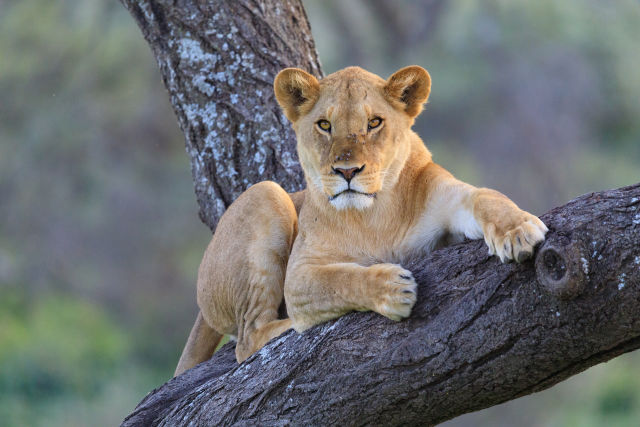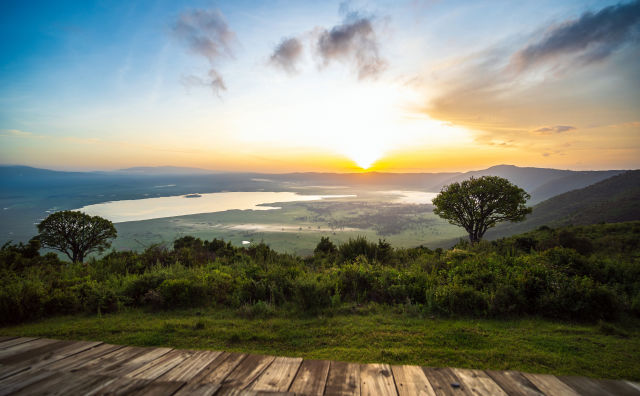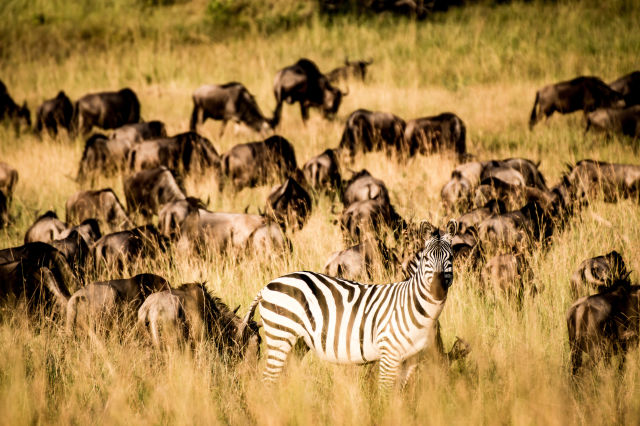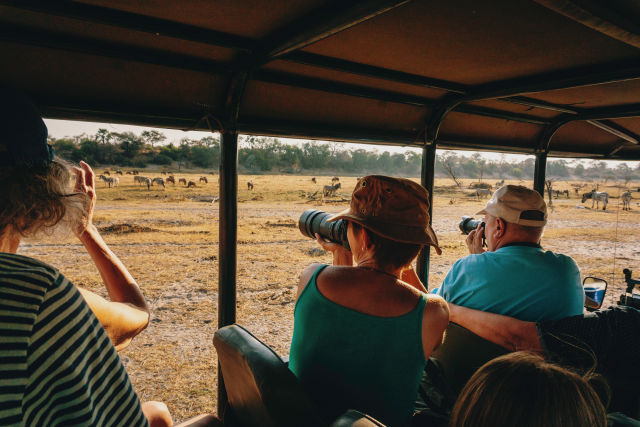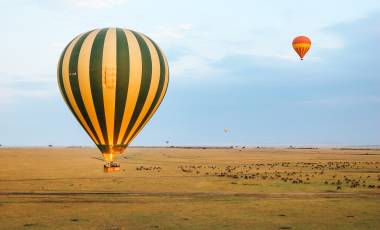It was an absolutely amazing trip. We saw the Big 5 plus their babies. We also saw the Ugly 5. Plus thousands of zebras and wildebeests and hundreds of different gazelles.

Serengeti Safari Holidays
Top 5 Wildlife Experiences on Serengeti Safari Holidays
Serengeti Safari Tours
Stretching across northern Tanzania, the Serengeti National Park is one of the largest parks in Africa. Our Serengeti safari holidays take you on thrilling game drives to witness some of the greatest animals on earth. It’s believed that there are up to two million wildebeest, one million gazelle and 200,000 zebras as well as large numbers of elephant and a wonderful selection of bird life in the Serengeti. Lions are often seen roaming the wilderness in large numbers and there are around 2,000 inside the park itself.
The terrain of the national park varies from treeless plains to stretches of savannah dotted with flat-topped acacia trees. Granite rock outcrops, known as kopjes, blend with riverine bush and thick scrub in the area around the Seronera River. On a Serengeti safari tour, you’ll also learn about the ecosystems as well as going in search of the wildlife.
If you want to go on Serengeti holidays during the wildebeest breeding season, the best time to visit is in January and February. They then move to the north and west of the Serengeti between April and June. From July to October, the animals begin their move further north to the Masai Mara in Kenya, before starting to return to the southern and central plains of the Serengeti in November.
You’ll also explore the vast plain on our Serengeti safari holidays, where you can go in search of the park’s most impressive game, before camping out beneath the stars and experiencing the wilder side of Africa.
Serengeti Holidays
FAQs about Serengeti Safaris
When is the best time to visit the Serengeti for a safari?
The best time to go on a Serengeti safari is during the dry season, between June and October. During this period, the vegetation is sparse, making it easier to spot wildlife such as the famous Great Migration of zebras and wildebeest. The dry season also provides optimal game viewing opportunities as animals congregate around water sources. Temperatures are also moderate during this season and there is less chance of rain. The dry season coincides with the breeding season for many animals, so there are plenty of opportunities to watch courtship displays and territorial disputes.
What wildlife can be seen in the Serengeti?
The Serengeti is home to a diverse ecosystem, which is world-renowned for its extraordinary wildlife population. You’ll find a wide array of animals, including the famous Big Five, which is made up of lions, leopards, elephants, rhinoceroses and buffaloes. The Serengeti is also known for the annual Great Migration, where millions of wildebeest, zebras and antelopes go in search of greener lands. This is without doubt one of nature’s greatest spectacles. The diverse array of wildlife in the Serengeti pays testament to the importance of conservation efforts to protect and preserve this remarkable ecosystem.
Peggy Rybachuk Kenya & Tanzania Adventure
Andrew Griffin Kenya & Tanzania AdventureThe 14 day experience was truly amazing for me and my son. The whole experience including the organisation, camping and hotels was outstanding. The trip involved some long days, long drives and early morning but you soon forgot about this as you were rewarded with amazing sunrises, stunning wildlife in at least five different national parks or wildlife area and beautiful scenery. Our local guides and Exodus team were extremely friendly, professional and knowledgeable.
The final few days in Zanzibar allowed us to chill out on a beautiful white beach and enjoy the Indian Ocean. The optional trips including the Serengeti Balloon Experience, the snorkelling in Zanzibar and the Maasia people tour were brilliant.
Bridget Bennett Kenya & Tanzania AdventureThis trip exceeded all expectations in terms of the iconic wildlife we saw and the spectacular scenery, with a wonderful guide and crew. Also we had a good group of only 7, and being outside peak season camp sites were quiet, and there was less competition between safari vehicles for prime viewing spots.
Expert Blog Entries
The Adventure Begins Here
Get regular inspiration straight to your inbox from Exodus’ experts.
